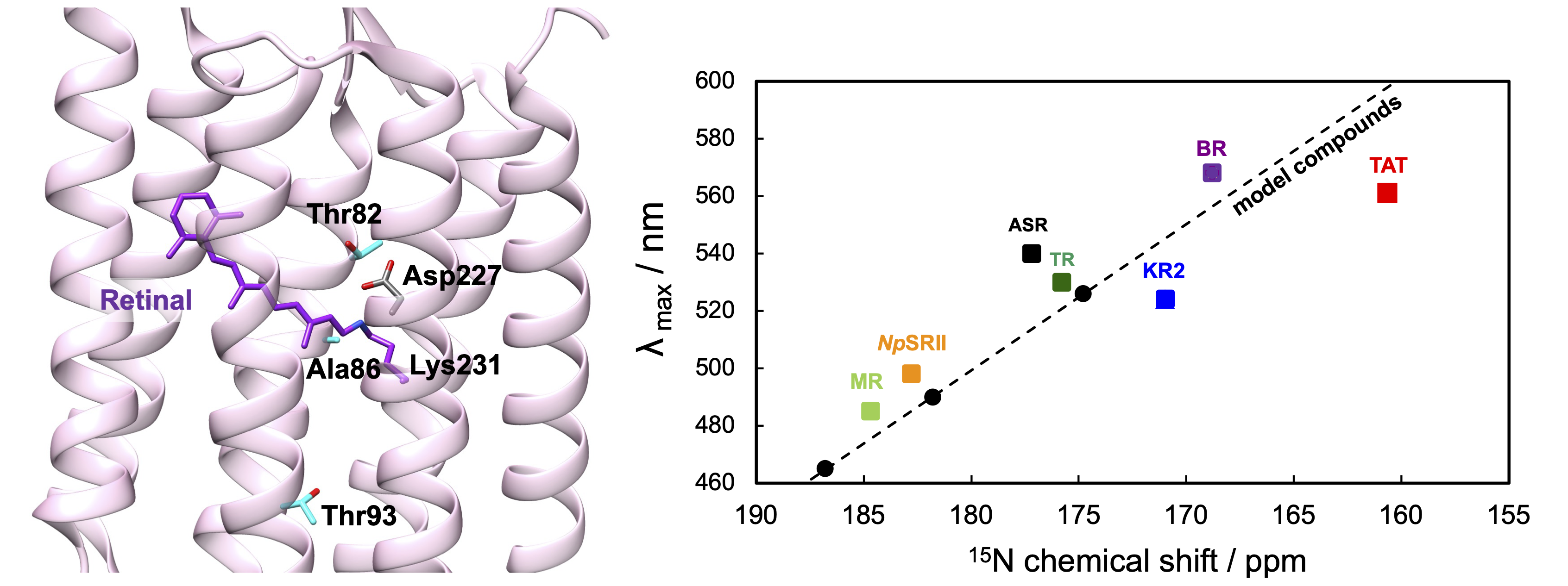1
"Solid-state NMR for the characterization of retinal chromophore and Schiff base in TAT rhodopsin embedded in membranes under weakly acidic conditions" by Sui Arikawa, Teppei Sugimoto, Takashi Okitsu, Akimori Wada, Kota Katayama, Hideki Kandori, Izuru Kawamura is published in BPPB as the J-STAGE Advance Publication.
2023 March 02 BPPB
A following article is published as the J-STAGE Advance Publication in "Biophysics and Physicobiology".
Sui Arikawa, Teppei Sugimoto, Takashi Okitsu, Akimori Wada, Kota Katayama, Hideki Kandori, Izuru Kawamura
"Solid-state NMR for the characterization of retinal chromophore and Schiff base in TAT rhodopsin embedded in membranes under weakly acidic conditions"
URL:https://doi.org/10.2142/biophysico.bppb-v20.s017
- Abstract
- TAT rhodopsin extracted from the marine bacterium SAR11 HIMB114 has a characteristic Thr-Ala-Thr motif and contains both protonated and deprotonated states of Schiff base at physiological pH conditions due to the low pKa. Here, using solid-state NMR spectroscopy, we investigated the 13C and 15N NMR signals of retinal in only the protonated state of TAT in the 1-palmitoyl-2-oleoyl-sn-glycero-3-phosphoethanolamine/1-palmitoyl-2-oleoyl-sn-glycero-3-phospho (1′-rac-glycerol) (POPE/POPG) membrane at weakly acidic conditions. In the 13C NMR spectrum of 13C retinal-labeled TAT rhodopsin, the isolated 14-13C signals of 13-trans/15-anti and 13-cis/15-syn isomers were observed at a ratio of 7:3. 15N retinal protonated Schiff base (RPSB) had a significantly higher magnetic field resonance at 160 ppm. In 15N RPSB/λmax analysis, the plot of TAT largely deviated from the trend based on the retinylidene-halide model compounds and microbial rhodopsins. Our findings indicate that the RPSB of TAT forms a very weak interaction with the counterion.





